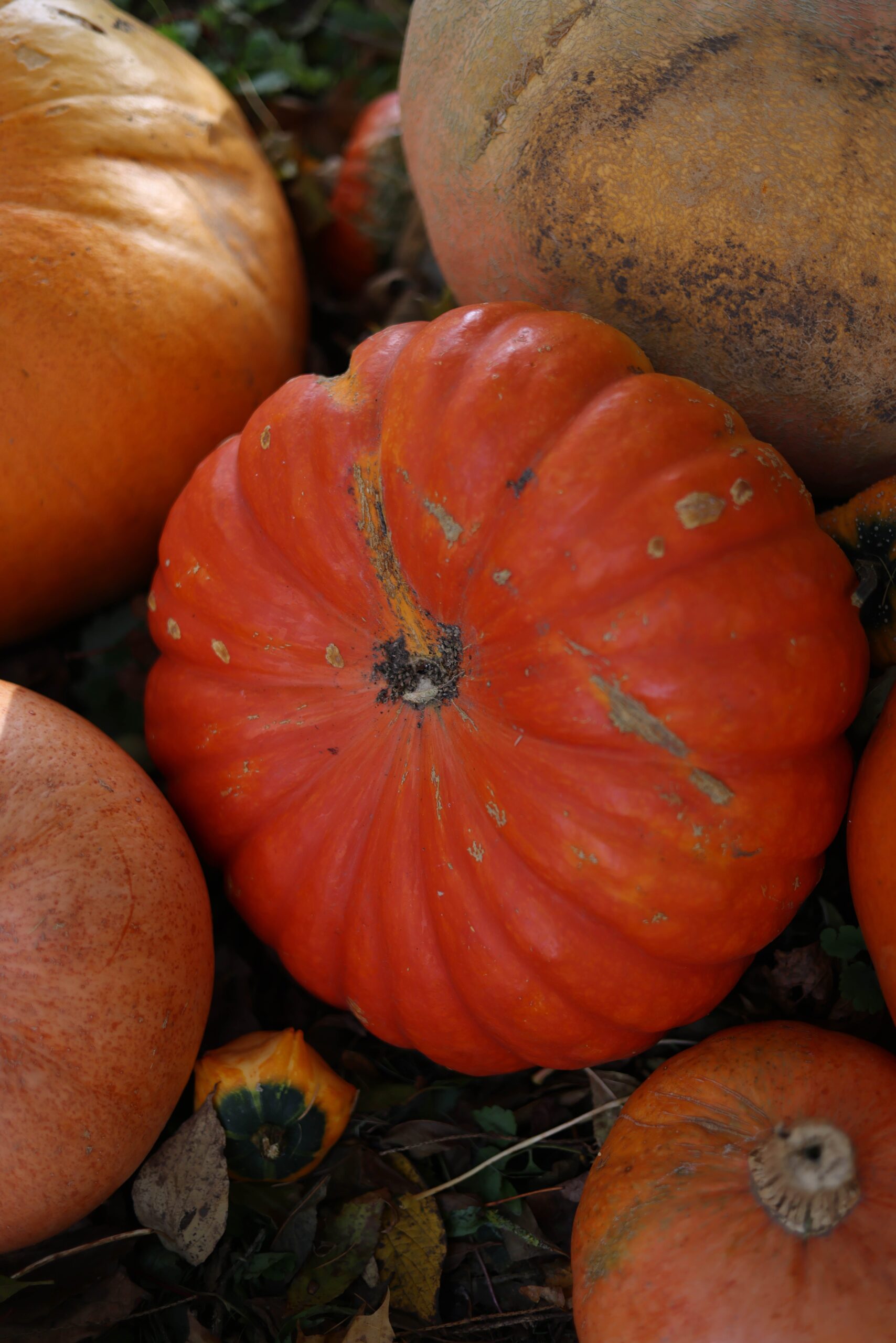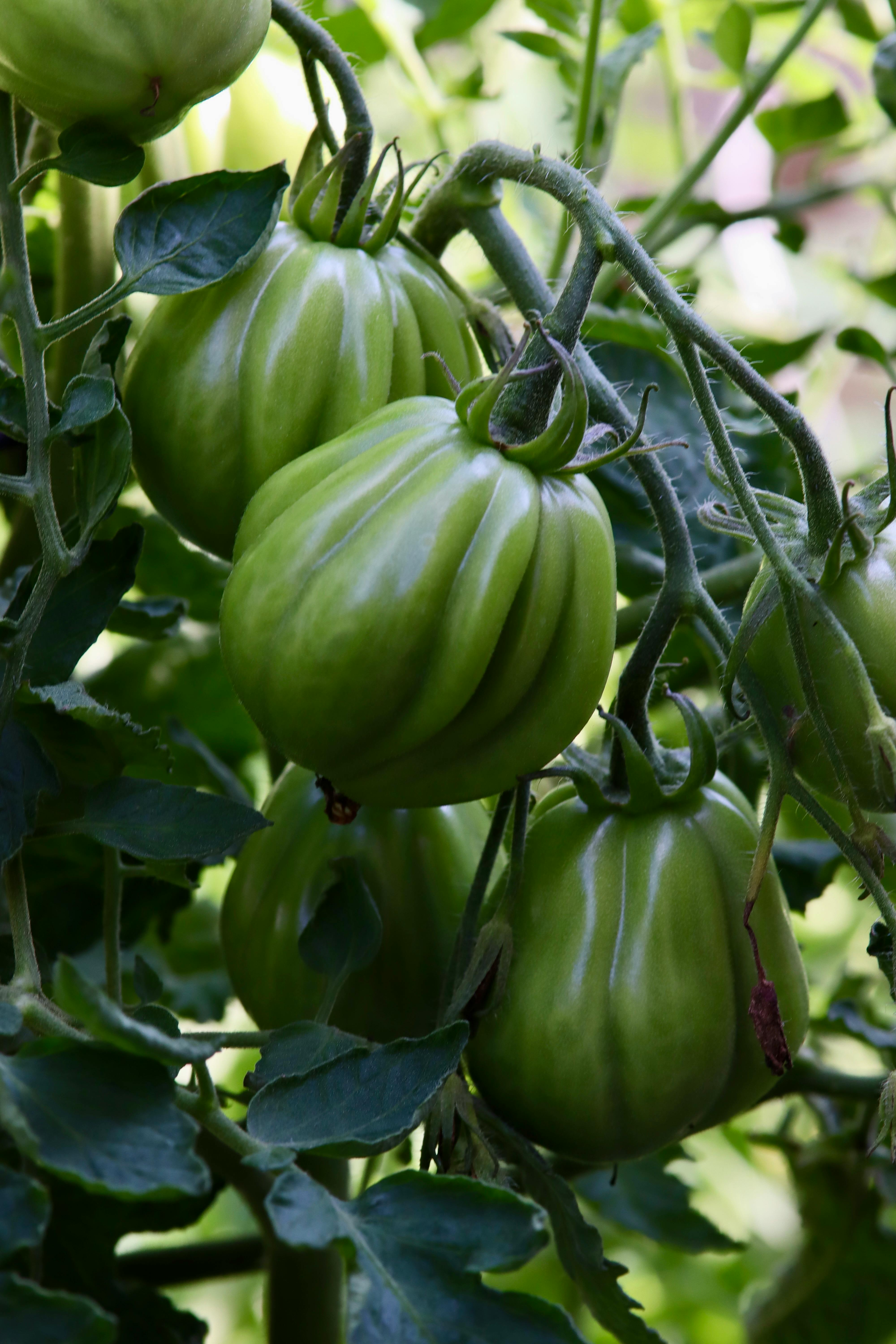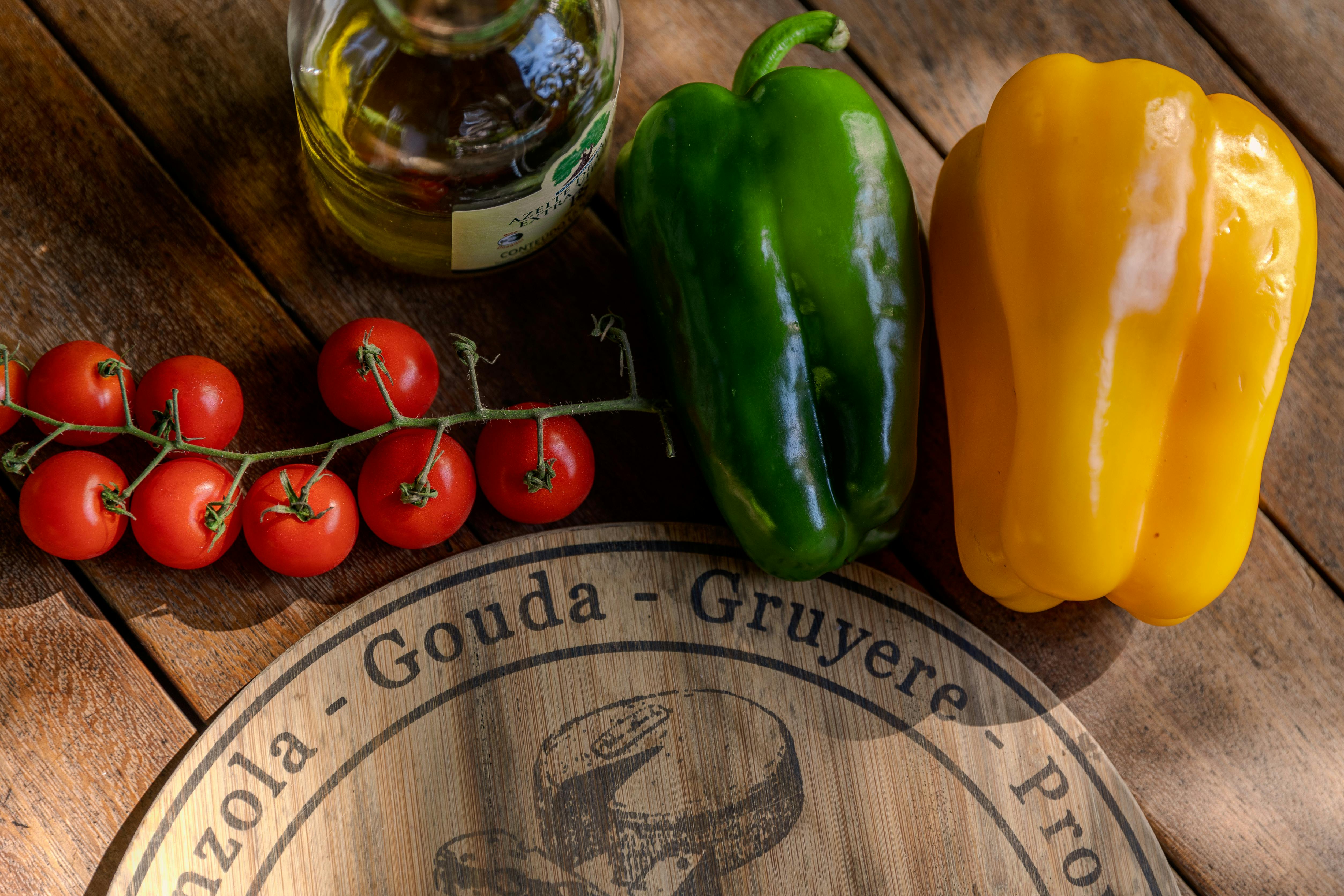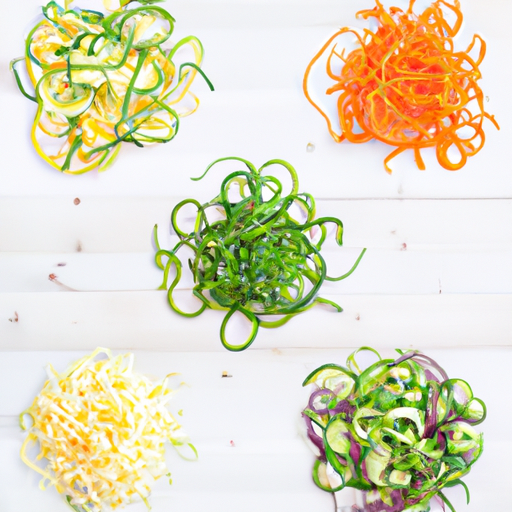If you’re looking to add a healthy and fun twist to your meals, look no further than spiralizers! These handy kitchen gadgets are the key to creating delicious vegetable noodles that are not only visually appealing but also packed with nutrients. Tastepan.com is here to guide you in choosing the perfect spiralizer to elevate your culinary experience. From zucchini and carrots to sweet potatoes and butternut squash, spiralizers allow you to effortlessly transform a variety of vegetables into exciting pasta alternatives. Get ready to spiralize your way to healthier and more vibrant dishes that will impress both your taste buds and your guests!

Benefits of Spiralizers
Increasing vegetable consumption
Using a spiralizer can greatly increase your vegetable intake, as it allows you to easily transform various vegetables into fun and tasty noodle shapes. Spiralized vegetables are a great alternative to traditional pasta, offering a lighter and more nutritious option. By incorporating vegetable noodles into your meals, you can easily meet your daily recommended servings of vegetables and reap the numerous health benefits they provide.
Promoting a healthy diet
A spiralizer is an invaluable tool for promoting a healthy diet. By swapping regular pasta or rice with vegetable noodles, you can reduce your calorie and carbohydrate intake while increasing your fiber and nutrient intake. Vegetable noodles are low in calories, fat, and carbohydrates, making them an excellent choice for those looking to manage their weight or restrict their carbohydrate intake. Moreover, they are packed with vitamins, minerals, and antioxidants that are essential for maintaining good overall health.
Adding variety to meals
One of the greatest advantages of spiralizers is the variety they bring to your meals. With a spiralizer, you can transform a wide range of vegetables into beautiful and delicious noodle shapes, allowing you to explore new flavors and textures. From zucchini and carrots to sweet potatoes and beets, the possibilities are endless. By incorporating a variety of vegetable noodles into your meals, you can keep your taste buds engaged and make your dishes visually appealing, adding excitement to your dining experience.
Types of Spiralizers
Handheld spiralizers
Handheld spiralizers are compact and easy to use. They are small enough to fit in a drawer and are perfect for those who have limited space in their kitchen. These spiralizers typically have a rotating mechanism that helps create the noodle shapes. They are manual and require a bit of effort to spiralize the vegetables, but they are generally affordable and convenient for small-scale spiralizing needs.
Countertop spiralizers
Countertop spiralizers are larger and typically come with a suction or grip system to secure them to your countertop. They often have multiple blades and offer a range of cutting options, allowing you to create various noodle shapes and sizes. Countertop spiralizers are usually more sturdy and efficient than handheld ones, making them great for larger quantities and more frequent use. However, they do take up more space on your kitchen counter or in your cabinets.
Electric spiralizers
Electric spiralizers take the effort out of spiralizing. They are powered by electricity and feature automatic mechanisms that do the spiralizing for you. Electric spiralizers are the most convenient option if you have a large amount of spiralizing to do or if you have limited strength or dexterity in your hands. However, they tend to be more expensive and may take up more space in your kitchen.

Considerations when Choosing a Spiralizer
Size and storage
Before purchasing a spiralizer, consider the size and storage options that will work best for your kitchen. If space is limited, a handheld spiralizer or a compact countertop spiralizer would be a good choice. If you have ample counter or storage space, a larger countertop spiralizer or an electric spiralizer could be more suitable. Additionally, check if the spiralizer is easy to disassemble and clean, as this can significantly impact its usability and maintenance.
Blades and cutting options
Check the number and type of blades that come with the spiralizer. The more blades available, the more versatility you will have in creating different shapes and sizes of vegetable noodles. Look for spiralizers that offer interchangeable blades and cutting options, such as ribbons or julienne cuts. This will allow you to experiment with different recipes and culinary creations.
Ease of use and cleaning
Consider how easy the spiralizer is to use and clean. Look for spiralizers with clear instructions and user-friendly designs. Some models have features like a built-in container to catch the vegetable noodles or a blade storage compartment for convenience. Additionally, consider whether the spiralizer is dishwasher safe or if it requires hand washing. Ease of use and cleaning are important factors to ensure that your spiralizer becomes a practical and enjoyable kitchen tool.
Popular Spiralizer Brands
Paderno World Cuisine
Paderno World Cuisine is a renowned brand that offers high-quality kitchen products, including spiralizers. Their spiralizers are widely recognized for their durability and efficiency. Paderno World Cuisine spiralizers often come with multiple blades, allowing you to create various noodle shapes. They are designed to be easy to use and clean, making them a popular choice among home cooks and professional chefs alike.
OXO
OXO is a trusted brand known for its innovative and user-friendly kitchen tools. Their spiralizers are no exception. OXO spiralizers are designed with a comfortable grip handle and a sturdy base to ensure stability during use. They often include multiple blades for versatile cutting options. OXO spiralizers are lauded for their durability and ease of use, making them a reliable choice for anyone looking to spiralize vegetables with ease.
Brieftons
Brieftons is a well-regarded brand that specializes in kitchen gadgets, including spiralizers. Brieftons spiralizers are designed with user convenience in mind. They often feature a compact and space-saving design, making them ideal for smaller kitchens. Brieftons spiralizers are known for their sharp and durable blades, allowing for precise and effortless spiralizing. With their commitment to quality and customer satisfaction, Brieftons is a brand worth considering when choosing a spiralizer.

Preparing Vegetables for Spiralizing
Choosing the right vegetables
Not all vegetables are suitable for spiralizing. It’s essential to choose vegetables that are firm, with a relatively straight shape and a diameter that can fit into the spiralizer. Some popular vegetables for spiralizing include zucchini, carrots, sweet potatoes, cucumbers, beets, and butternut squash. Experiment with different vegetables to find your favorites and discover new flavors and textures.
Peeling and trimming
Depending on the vegetable, you may need to peel it before spiralizing. Vegetables like zucchini, carrots, and butternut squash usually do not require peeling, as their skins are thin and edible. However, vegetables like beets and sweet potatoes may benefit from peeling to remove any tough or bitter skin. Additionally, trim the ends of the vegetables to ensure they fit securely into the spiralizer and to create a more visually appealing end result.
Cutting vegetables into the right size
To ensure proper spiralizing, it’s important to cut the vegetables into appropriate sizes. For most spiralizers, cutting the vegetables into manageable lengths, typically around 4-6 inches, is sufficient. However, if the vegetable is exceptionally long, it may be necessary to cut it in half or into smaller sections. Consistent sizing helps ensure the vegetable is easily inserted into the spiralizer and produces uniform noodle shapes.
Techniques for Spiralizing Vegetables
Basic spiralizing technique
To spiralize vegetables, start by securing the spiralizer to the desired surface. If using a handheld spiralizer, hold it firmly in your hand. If using a countertop spiralizer or an electric spiralizer, follow the manufacturer’s instructions for securing the device. Next, insert the vegetable into the spiralizer, applying gentle pressure to hold it in place. Begin turning the handle or activating the blades, depending on the type of spiralizer, and watch as beautiful vegetable noodles form.
Creating different noodle shapes
With the variety of blades and cutting options offered by many spiralizers, you can easily create different shapes of vegetable noodles. Experiment with using different blades and cutting options to make thin or thick noodles, ribbon-shaped noodles, or even curly fries. Each shape has its own unique texture and appearance, allowing you to get creative with your dishes and add visual appeal.
Using different vegetable varieties
Don’t limit yourself to just one type of vegetable when spiralizing. Mix and match different vegetable varieties to create exciting and flavorful combinations. For example, you can spiralize zucchini and carrots together to create a colorful and nutritious base for a stir-fry. Combining vegetables not only adds variety to your meals but also enhances the nutritional profile, as each vegetable brings its unique set of vitamins and minerals to the table.
Recipes Using Vegetable Noodles
Zucchini noodles with marinara sauce
- Spiralize 2-3 zucchini into thin noodle shapes.
- Heat a pan over medium heat and add olive oil.
- Sauté minced garlic and diced onion until fragrant and translucent.
- Add your favorite marinara sauce to the pan and simmer for a few minutes.
- Toss in the zucchini noodles and cook for 2-3 minutes until heated through but still crisp.
- Serve with grated Parmesan cheese and fresh herbs.
Carrot noodles with peanut sauce
- Spiralize 2-3 carrots into noodle shapes.
- In a bowl, whisk together ¼ cup of peanut butter, 2 tablespoons of soy sauce, 1 tablespoon of honey, 1 tablespoon of rice vinegar, and a pinch of red pepper flakes.
- Heat a pan over medium heat and add a little oil.
- Sauté the carrot noodles until slightly tender.
- Pour the peanut sauce over the noodles and stir to coat evenly.
- Garnish with chopped peanuts and cilantro before serving.
Sweet potato noodles with pesto
- Spiralize 1 large sweet potato into noodle shapes.
- In a food processor, combine 2 cups of fresh basil leaves, ⅓ cup of pine nuts, 2 cloves of garlic, ½ cup of grated Parmesan cheese, and a squeeze of lemon juice.
- Pulse the ingredients until well combined and a pesto-like consistency is achieved.
- Heat a pan over medium heat and add olive oil.
- Sauté the sweet potato noodles until tender but still slightly firm.
- Stir in the pesto sauce and cook for an additional minute.
- Serve sprinkled with extra Parmesan cheese and toasted pine nuts, if desired.
Tips for Cooking Vegetable Noodles
Steaming or sautéing for a crisp texture
To maintain a crisp texture when cooking vegetable noodles, try steaming or sautéing them. Steaming involves placing the vegetable noodles in a steamer basket or a microwave-safe dish with a little water and heating until tender yet still firm. Sautéing involves quickly cooking the noodles in a hot pan with a bit of oil until they are slightly softened but retain their crunch. Both methods retain the natural sweetness and bite of the vegetable noodles.
Boiling for a softer texture
If you prefer a softer texture or want to mimic the consistency of traditional pasta, boiling vegetable noodles is a good option. Bring a pot of salted water to a boil, then add the noodles and cook for 1-2 minutes until tender. Be careful not to overcook them, as they can become mushy. Once cooked, drain the noodles well and rinse them with cold water to stop the cooking process.
Avoiding overcooking
Overcooking vegetable noodles can result in a soggy and unappetizing texture. Keep a close eye on them while cooking and aim for a slightly al dente texture. The cooking time required may vary depending on the thickness and type of vegetable noodle. It’s a good idea to do a quick taste test as the noodles cook to ensure they are cooked to your liking.
Storing and Reheating Vegetable Noodles
Proper storage techniques
To store vegetable noodles, carefully transfer them to an airtight container or a zip-top bag. It is best to remove as much air as possible to prevent oxidization and maintain freshness. Store them in the refrigerator for up to 3-4 days. If you need to store them for longer, blanch the noodles in boiling water for 1-2 minutes, drain, and shock them in ice water before storing in the freezer in an airtight container or freezer-safe bag. Frozen vegetable noodles can be kept for several months.
Reheating methods
To reheat vegetable noodles, there are several methods you can use. Sautéing them in a hot pan with a little oil will help revive their texture and flavor. Steaming them briefly is another option to warm them up gently without losing too much moisture. If you prefer a quick method, heating them in the microwave for a short time can also work well. Be careful not to overheat, as this can cause the noodles to become soggy.
Tips to prevent noodles from becoming mushy
To prevent vegetable noodles from becoming mushy, ensure they are properly cooked to a slightly al dente texture. Overcooking can cause them to lose their structure and become soft. Additionally, when reheating, avoid cooking them for extended periods or using high heat, as this can lead to mushiness. Finally, drain and pat dry any excess moisture from the noodles before serving, especially if using sauces or dressings, to help maintain their desired texture.

